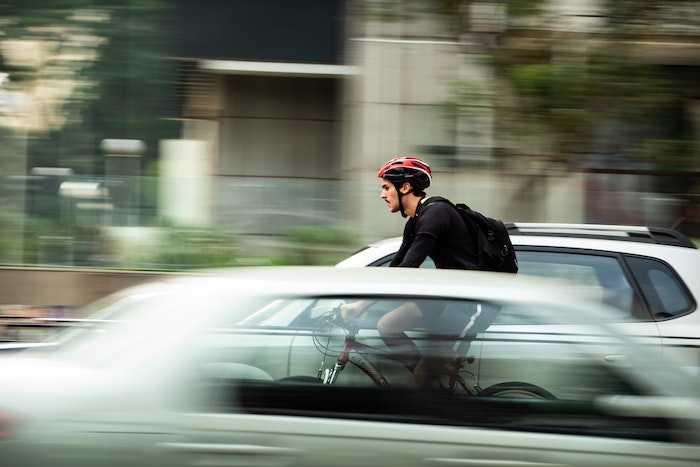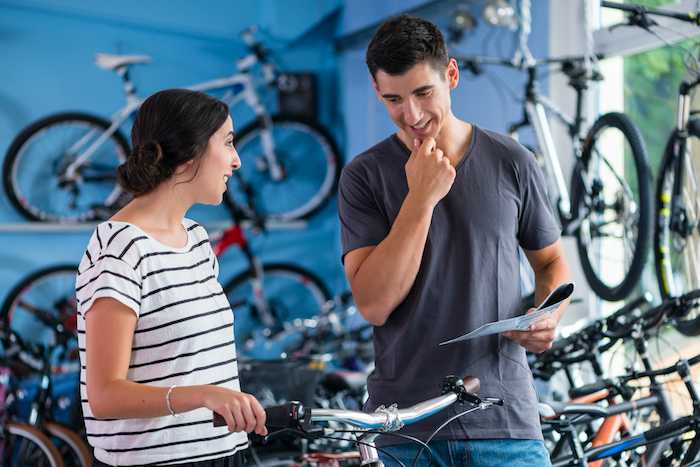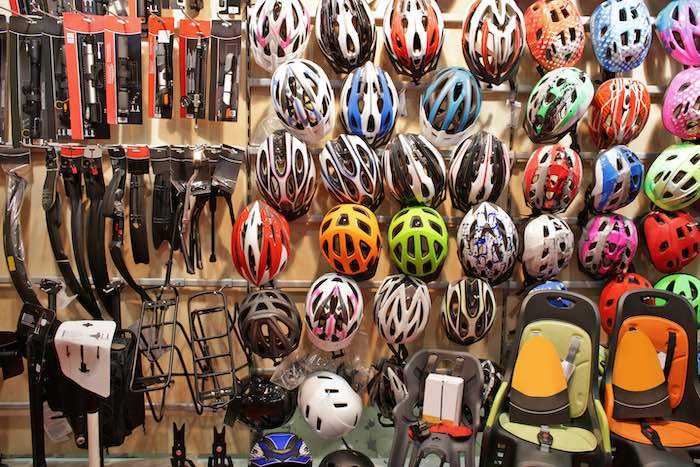
This article was originally published on CyclingHow.com, and is republished here with permission.
The benefits of cycling are well documented. It’s a fun way to get fit. It causes less strain and injury if done correctly. Cycling also allows you to accomplish other tasks, such as getting to work or buying groceries, while also exercising. It is, therefore, understandable why cycling is an increasingly popular activity among Americans.
Notwithstanding all the benefits of cycling, many cyclists are getting injured or killed on US roads. For instance, the National Highway Traffic Safety Administration (NHTSA) reports that 857 cyclists were killed and 47,000 injured in the United States in 2018. What is of concern is that the NHTSA figures show that the number of cyclist fatalities in the United States has been on a steady increase since 2009, dipping only slightly in 2013 and 2017.
The Centers for Disease Control and Prevention (CDC) reports that cyclists are more susceptible to injury and death from crashes than motor vehicle occupants. This makes it evident that there is an urgent need to change the situation. As a cyclist, you play an essential part in ensuring your safety on the roads.
This article presents some bicycle safety facts, statistics, and tips to help every cyclist remain safe at all times on our roads. Mostly, we get our data from the US Department of Transport’s NHTSA and other interest groups dedicated to cyclists’ safety.
1. Most Accidents Happen in Urban Areas
As can be expected, urban areas are the epicenter of road accidents for cyclists. For instance, 71% of cyclists’ deaths in 2016 occurred in urban areas, while the rest of the same year’s deaths happened in rural areas.
Urban arterial roads (high capacity roads that deliver traffic from collector roads to freeways) have the highest percentage of cyclist fatalities. These roads are responsible for around 44% of cyclist deaths.
2. More Cyclists are Dying now Than In 1990
With innovations in in-vehicle technology and ongoing research into road safety, you would expect fewer cyclists to be dying from road accidents now than 30 years ago. Unfortunately, data shows that more cyclists died in 2018 than in 1990.
Of course, some could argue that there are likely to be more cyclists on the roads today than in 1990. For example, Statista.com reports that “The number of cyclists/bike riders in the U.S. has increased over the past three years from around 43 million to 47.5 million in 2017.” However, the death of over 800 cyclists on our roads shows that a lot still needs to be done to ensure that no single death is recorded.
3. Cyclists Are More Likely to be Killed at Night
Not surprisingly, most cyclist fatalities occur at night. For instance, the NHTSA reports that in 2016, during weekdays and weekends, the highest proportion of bicycle fatalities occurred between 6 p.m. and 8:59 p.m. On weekends, 20% of fatalities occur within that timeframe.
4. Most Cyclists Killed in Accidents are Above 40
An analysis of accidents that leave the cyclist dead shows that most of the cyclists killed are above 40. For example, in 2007, the average age of bicycle fatalities was 40. This number has been on the rise. The average age of bicycle fatalities in 2016 was 46.
5. Alcohol Plays a Part in Cyclist Accidents
The NHTSA’s National Center for Statistics and Analysis reports that “alcohol involvement (BAC of .01+ g/dL) – either for a motor vehicle driver involved in a fatal pedal cyclist crash and/or the fatally injured pedal cyclist – was reported in 37% of the traffic crashes that resulted in pedal cyclist fatalities in 2017.”
The numbers above are testimony that cyclists riding under the influence of alcohol are putting their lives in danger. They also show that some innocent cyclists are killed on roads by motorists driving under the influence of alcohol.
6. Most Accidents Include Single-Vehicle Crashes
According to the NHTSA, most cyclists killed on U.S. roads would have come into contact with a single-vehicle. The same organization reports that the highest number of deaths in 2018 can be attributed to light trucks (representing 87.9%). However, passenger vehicles are responsible for most injuries (20,000 or 75.2%). The front of the vehicle struck most injured cyclists.
7. Rear-End Collisions are the Most Common Type
Rear-end collisions (i.e., in front of the vehicle to the back of the bicycle) are the most common types of collisions. The League of American Bicyclists’ Every Bicyclist Counts Report says that “40% of fatal crashes with a reported collision type — were hit from behind incidents.” This is essential information because it helps organizations involved in cyclist safety to design effective training programs.
To ensure that motor vehicle drivers can see the cyclists on the road, it’s always crucial that riders make themselves more visible. Increasing visibility may be achieved by wearing bright-colored clothes. Neon-colored clothes are a good option, especially if you are riding during the night.
To improve your visibility, consider having lights installed on your cycle. A white light in front, a flashing red light behind, and multiple reflectors all over your bicycle are some of the recommended measures to help cyclists remain visible.
8. Picking the Right Bicycle Makes a Difference

Choosing the right bicycle can help save your life. This involves making sure that your bicycle is the right size for you. When buying a bike, consider the bike’s size and weight, the design of the tires, and your body size. These factors determine how comfortable you will be when riding your bicycle and your ability to concentrate on the road entirely.
Your decision should be influenced by what you want to use the bike for. Will you only be an occasional cyclist? Do you plan to use your bike for exercise? Or would you like to go the full mile and maybe ride in a triathlon or even compete someday? If you’re going to use the bike daily, you may need to invest in a stronger bicycle.
Check to make sure that your bicycle has all the right safety fittings. These include things like tires whose treads are not worn down, tightly-screwed wheels, working brakes, a well-oiled chain, a strong handlebar, a comfortable seat, and lights and reflectors on both ends and at either side of your bicycle.
9. Accidents Can be Avoided by Being Prepared
Being prepared does not only mean riding a bicycle that suits your body size and ensuring that your bike works perfectly before hitting the road; it means investing time in learning the road rules. It may also involve taking time to learn about road safety for cyclists and the main reasons why cyclists get injured or killed.
Prepare yourself by putting on all the protective gear that you need before mounting your bicycle. These include your bicycle helmet, bright clothes, and reflective gear. Plan your route and avoid overly busy roads, using bike lanes where available.
10. Know the Hazards
Being armed with facts and figures about accident rates for cyclists can motivate you to be more careful when riding and take safety measures more seriously. For example, one of the common hazards for cyclists involves motorists opening doors in front of cyclists. Knowing this will ensure that you will always be alert when you approach a car with someone inside.
Other hazards to look out for include:
- Motorists driving out of concealed driveways
- Drivers overtaking from the wrong side
- Cyclists cycling against traffic
- Motorists indicating to the right, and turning left, and vice versa
- Motorists failing to stop at intersections controlled by traffic lights or stop signs
11. Bicycle Helmets Are Effective

Bicycle helmets can save lives. The non-profit website Helmets.org cites data from the Insurance Institute for Highway Safety (IIHS), which reveals that nearly 3 out of 4 crashes (74%) involve head injuries. The same data from the IIHS shows that almost all (97%) bicycle fatalities involved cyclists not wearing a helmet.
The World Health Organization (WHO) advises cyclists to wear helmets because such head coverings “create an additional layer for the head and, thus, protect the wearer from some of the more severe forms of traumatic brain injury.”
Even though you may not need a license to ride a bicycle, it’s still essential to follow the traffic laws. For instance, it is dangerous to ride against traffic flow; a driver may shift to the side of the road, preparing to stop, not expecting that someone is coming.
Use appropriate hand signals when switching lanes or making a turn. Make no assumptions. Just because you are in a driver’s lane does not mean they can see you or are paying attention to the road. Stay alert and avoid making any sudden turns.
Don’t forget to always ride in a straight line. This helps others on the road predict your actions.
13. Become a Better Cyclist
It’s important to always improve your cycling skills. You can do this by taking cycling classes. Bicycling.com lists 14 places where you can get these lessons. The Bicycle Riding School in Somerville, Massachusetts is another example.
You can also practice in safe environments like parks, empty parking lots, and clear pathways. It’s crucial to learn necessary on-bike communication, including how to signal a turn or a lane switch.
Other skills you can practice include sitting still on a bicycle and relaxing your shoulders while riding. Learn the proper techniques to use when navigating a traffic circle and improve on your bicycle control.
14. Avoid Headphones

When you ride your bicycle, you always need to be alert, ensuring that your eyes and ears are always on the road. Headphones can drown out external sounds. When riding, you need to hear traffic noises for your safety. This may not always be possible when listening to music through headphones because it can lead to distracted riding.
Apart from the fact that listening to loud music on headphones can cause hearing loss, it may be against the law to ride a bicycle with headphones on. When you decide to go on the road, whether as a cyclist, pedestrian, or vehicle driver, you need to be fully alert. If every road user did their part, we may, one day, say that there are no cyclists, or anyone for that matter, killed on our roads.
15. The Cost of Cyclist Accidents
Like all other accidents, bicycle accidents impose a cost for both the involved individual and the economy in general. For instance, the Centers for Diseases Control and Prevention reports that non-fatal crash-related injuries could result in lifetime medical costs and productivity losses of around $10 billion.


